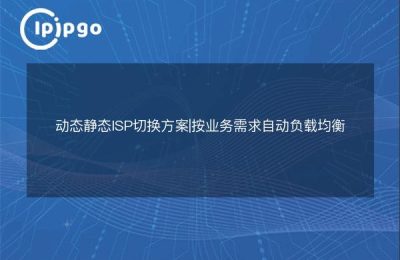
Hi everyone, I'm an author who loves to share. Today, we will come to talk about how to create an efficient dynamic IP proxy server resolution. As an author who specializes in IP proxy knowledge, I hope to present this complex yet interesting topic in a lively and fun way through this article.
I. What is Dynamic IP
First of all, let's understand what Dynamic IP is.In the Internet world, Dynamic IP refers to a temporary IP address that is assigned to a user by an Internet Service Provider (ISP) on an as-needed basis. In contrast, static IP refers to a fixed IP address that is assigned to a user by an ISP. Dynamic IP, on the other hand, is characterized by automatic assignment and change.
II. Dynamic IP and proxy servers
So, why should we focus on dynamic IP?This is because in proxy servers, using dynamic IP can provide many benefits. First of all, dynamic IP can provide higher proxy speed and responsiveness. With dynamic IP, proxy servers can change IP addresses frequently, bypassing some restrictions and enabling more efficient proxy resolution.
So, how to create an efficient dynamic IP proxy server resolution? Below, I will give you a detailed description.
Third, choose the right proxy server software
Before building an efficient dynamic IP proxy server, we need to choose a suitable proxy server software first. There are many available software options on the market, such as Nginx, Squid, and so on. These software come with powerful features and flexible configuration options to fulfill our proxy server needs.
Below, I'll use Nginx as an example to show you how to configure a dynamic IP proxy server.
IV. Configuring a Dynamic IP Proxy Server
1. Install Nginx
First, we need to install the Nginx software. There will be some command line operations involved in the installation process, so make sure you are familiar with it and prepared accordingly.
2. Configure the reverse proxy
In the Nginx configuration file, we need to add the reverse proxy configuration. This is done as follows:
server {
listen 80; server_name your-domain.com; server_name your-domain.com
server_name your-domain.com; server_name { listen 80; server_name your-domain.com; server_name your-domain.com
server { listen 80; server_name your-domain.com; location / {
proxy_pass http://your-upstream; proxy_set_header
proxy_set_header Host $host; proxy_set_header X-Real-IP $remote_addr; proxy_set_header
proxy_set_header X-Real-IP $remote_addr; proxy_set_header X-Forwarded-For $proxy_addr
proxy_set_header X-Forwarded-For $proxy_add_x_forwarded_for;
}
}In the above configuration, we forward the user request to the upstream service through the proxy server. It is also possible to set some request header information, such as X-Real-IP and X-Forwarded-For, to achieve more efficient proxy resolution.
3. Configure dynamic IP pools
To implement the dynamic IP feature, we can build a dynamic IP pool. The code example is as follows:
import random
def get_dynamic_ip().
ip_pool = ['192.168.0.1', '192.168.0.2', '192.168.0.3', ...] # Dynamic IP Pool
return random.choice(ip_pool)
def main(): dynamic_ip = get_dynamic_ip
dynamic_ip = get_dynamic_ip()
proxy = {'http': dynamic_ip, 'https': dynamic_ip} # Choose between http and https proxies as needed.
# Make a request using a proxy
response = requests.get(url, proxies=proxy)
print(response.text)
if __name__ == '__main__'.
main()In the above code, we set an IP address in the dynamic IP pool as a proxy server by randomly selecting it. In this way, a different IP address can be used for each request, realizing the dynamic IP feature.
With the above steps, we have successfully created an efficient dynamic IP proxy server resolution. When using a proxy server, we can fully utilize the characteristics of dynamic IP to improve proxy speed and responsiveness.








